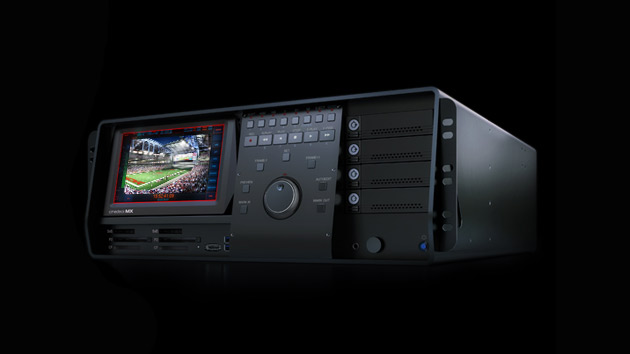News
Cinedeck releases software update v4.2
Next Monday, July 1, Cinedeck will release the new v4.2 software update, which brings powerful new features to its RX and MX recorders.
The new capabilities of these two-channel (RX) and four-channel (MX) recorders, combined with existing capabilities such as the ability to connect to shared SAN and NAS storage systems, expand their deployment options in editing and post-production operations, allowing them to be used as players or recorders in a variety of configurations.
Without further ado, here are the new features of v4.2:
Enhanced RS-422 control
The latest enhancements make it possible for Cinedeck RX and MX recorders to gain direct control of, or be controlled by, other devices in an editing mode. In addition, it is possible to emulate the interface of a video recorder on the Cinedeck display to provide full control of the recorder.
Playlists
What Cinedeck has called “Playlisting”, is the new function that allows you to create playlists after selecting multiple clips, taking advantage of the non-linear editor integrated in the interface. It is possible to arrange these clips in any order you want, from any folder and/or compatible format.
These same functions allow users to set entry and exit points to create subclips and include them in the list.
Segment Record
This is another feature added in this version and is also known as “user-defined fragmentation”. It basically means that, after having set a maximum duration for clips, when a file reaches it during recording, it closes and the next one starts. This allows long clips to be split into segments with a specific shorter duration, which can be very useful if we are using storage devices that have limited file sizes.
Segmented clips are fully accessible for playback, copying and transfer to a SAN.
Support of LUTs
It is now possible to import and apply non-destructive, real-time LUTs to the material. The results can be viewed from the integrated display of the Cinedeck RX and MX devices or from an external monitor.
There is also the option to save both master and proxy files with the LUT applied.
Improved “Burn-in” options
The elements that can be “burned” on the image have been improved, including timecode, file name and LUT names.
There are also new character overlay tools that allow you to control their horizontal and vertical position, their size, and the background and foreground colors for each channel independently.
The ability to insert additional data, such as GPS coordinates, is planned to be added in later software updates.
Subtitle support
Recording and playback of CEA-608 and CEA-708 ‘DTV’ standards is supported as long as the files are in MOV format. It has been announced that Op1A MSF, AFD and V-chip subtitles will be supported in a future v4.2 maintenance release.
H.264 Streaming
New H.264 encoding profiles have been added and MP4 with H.264 is now streamable.
Enhanced audio and video options
Audio recording enhancements include support for MOV with interlaced audio, mono or separate WAV files, as well as input channel to file remapping. Other enhanced video features include subsampling of video input from 10bit to 8bit for 8bit codecs and the ability to link multiple channel playback.
In addition to these new features, another update is planned for July, which will add support for ARRIRAW recording and 3D stereo modes, increasing the versatility of Cinedeck recorders in digital cinema and broadcast environments.
With them it will be possible to capture the RAW signal in full resolution from ARRI Alexa cameras, using standard frame rates and being able to reach up to 60fps.
As for the extended s3D modes, they will allow synchronized recording and playback of stereoscopic material using any codec in the Cinedeck range. Image display will be possible in flip-flop anaglyph and side-by-side vertical or horizontal.
On this page you have all the information available about the RX ($9,495 per play/record channel) and MX ($13,499) recorders.
If you want to learn more about advanced digital film operations, cameras and formats I recommend you take a look at the next DIT Course.


